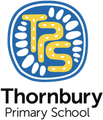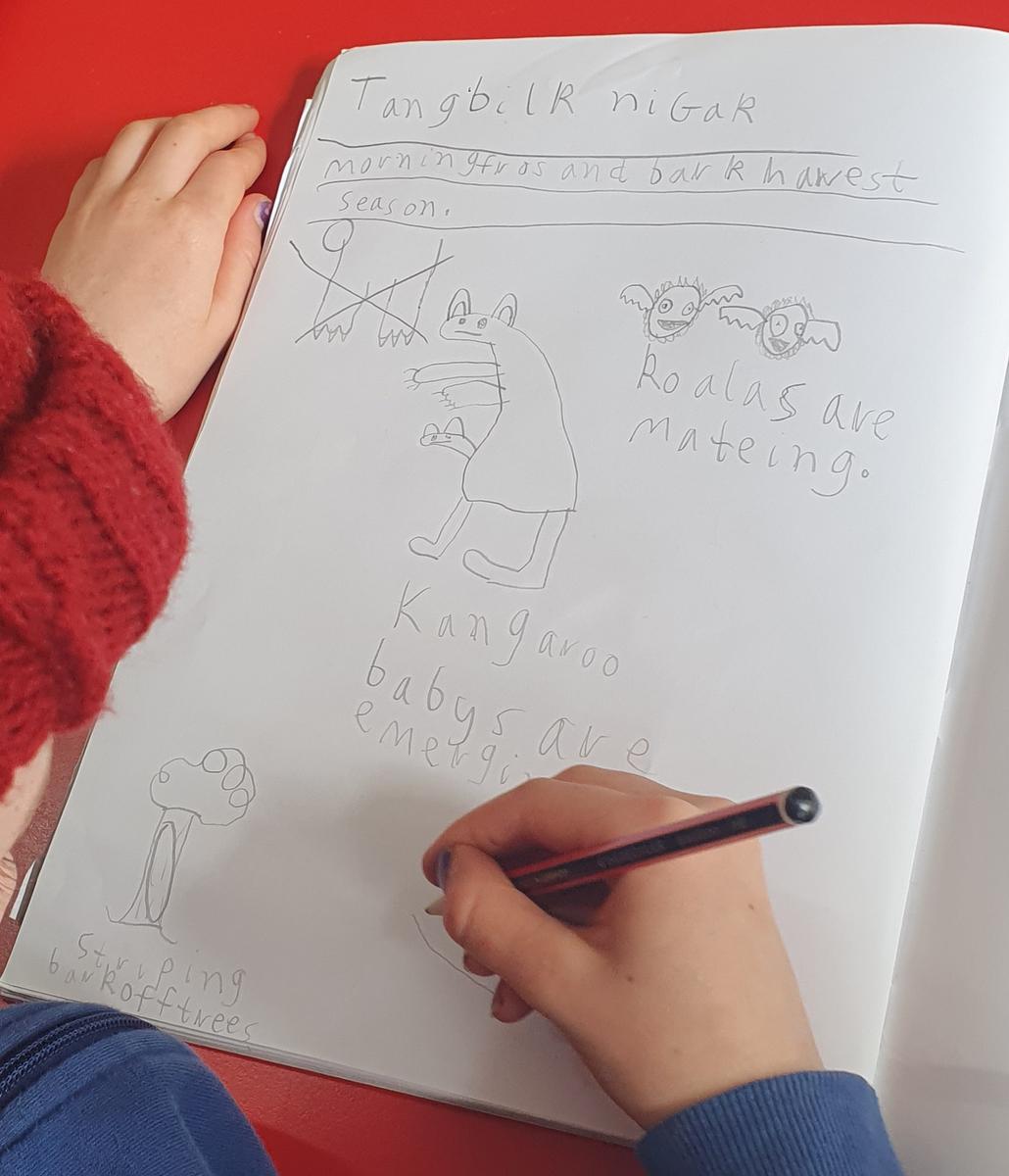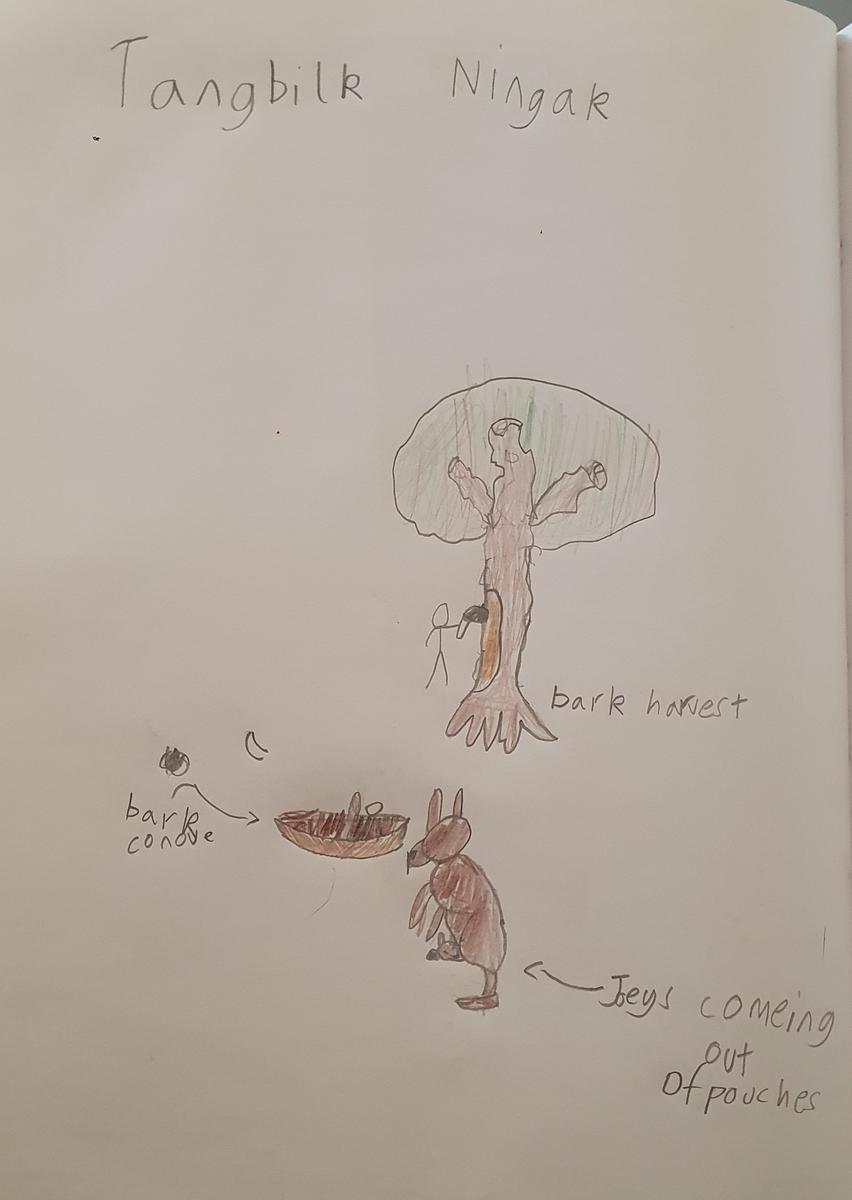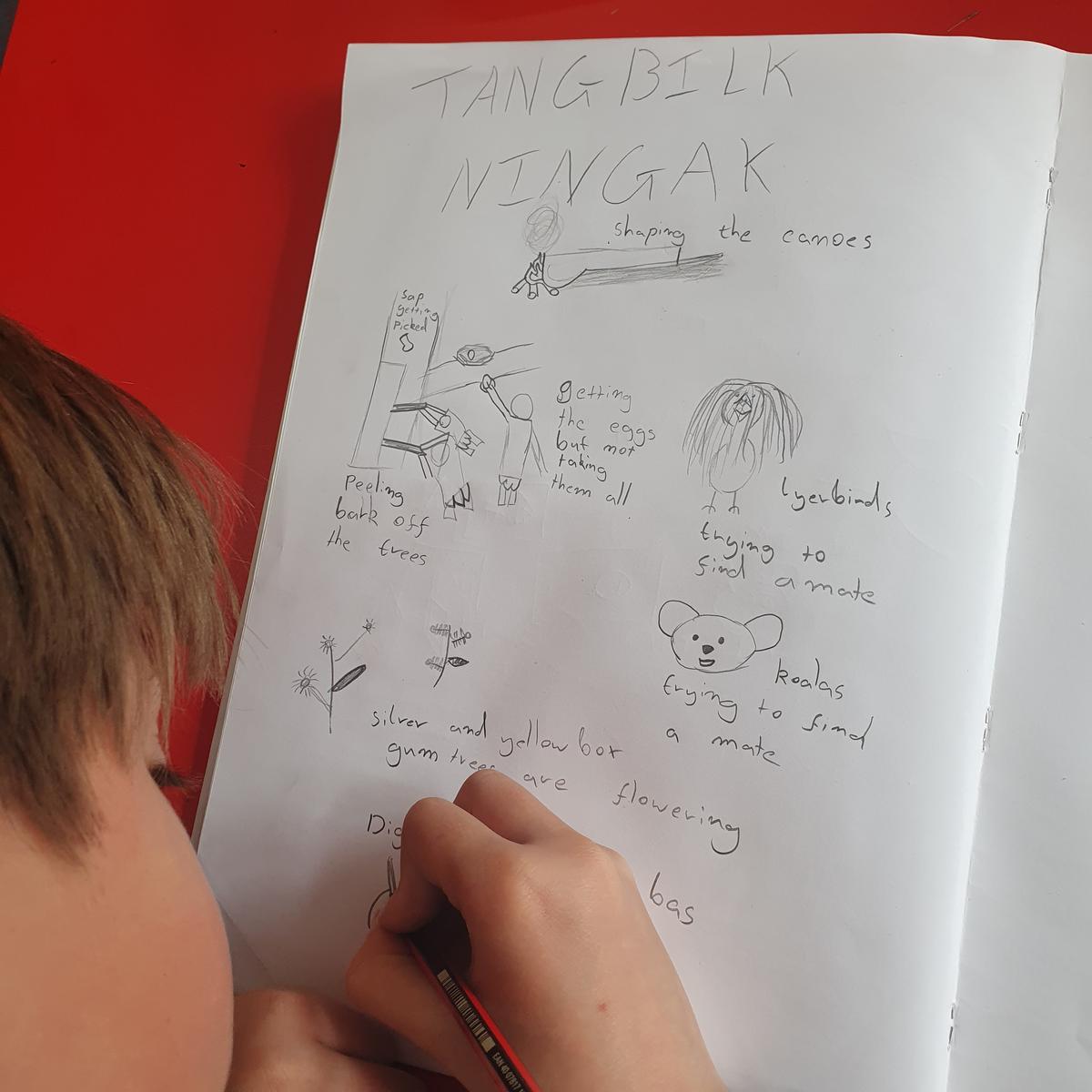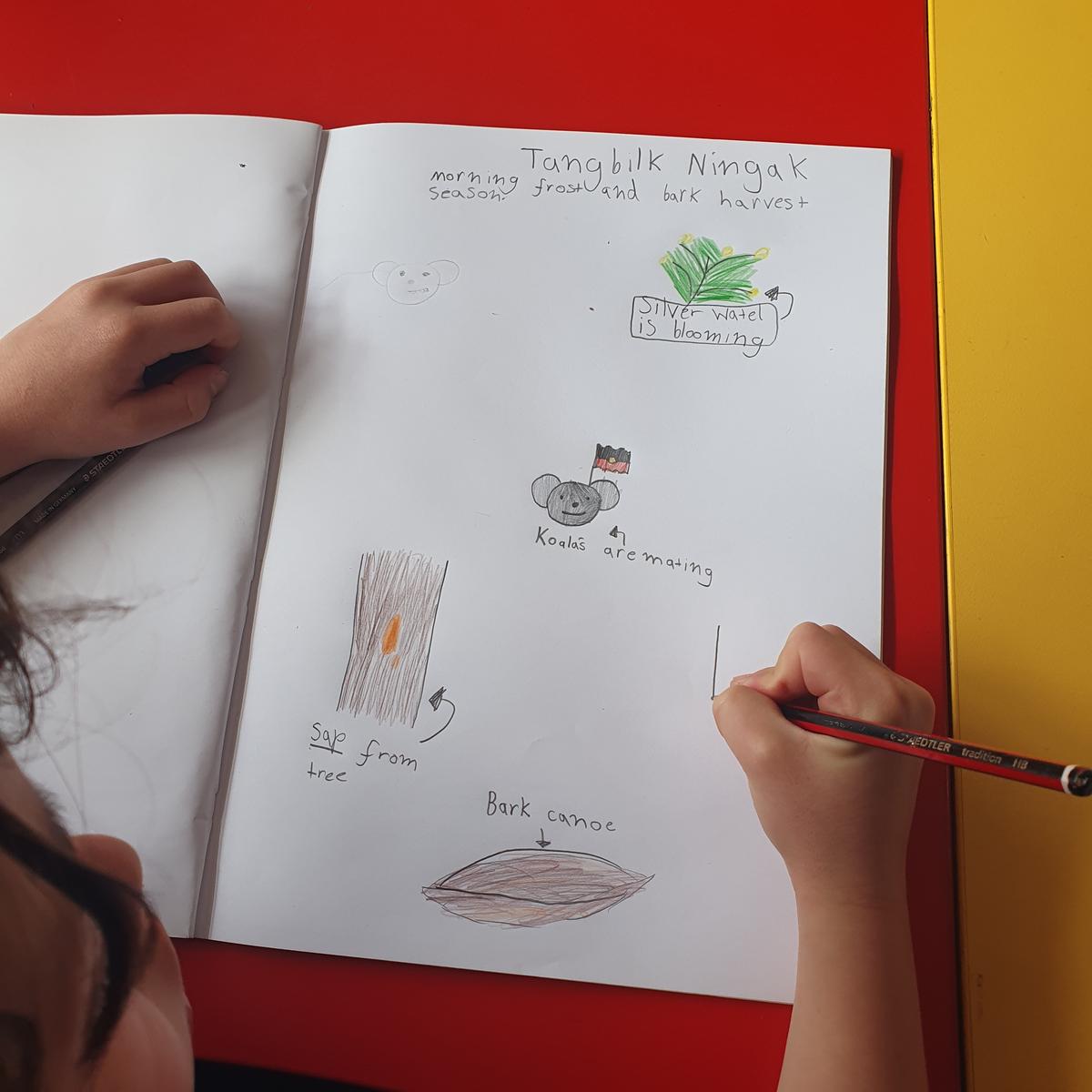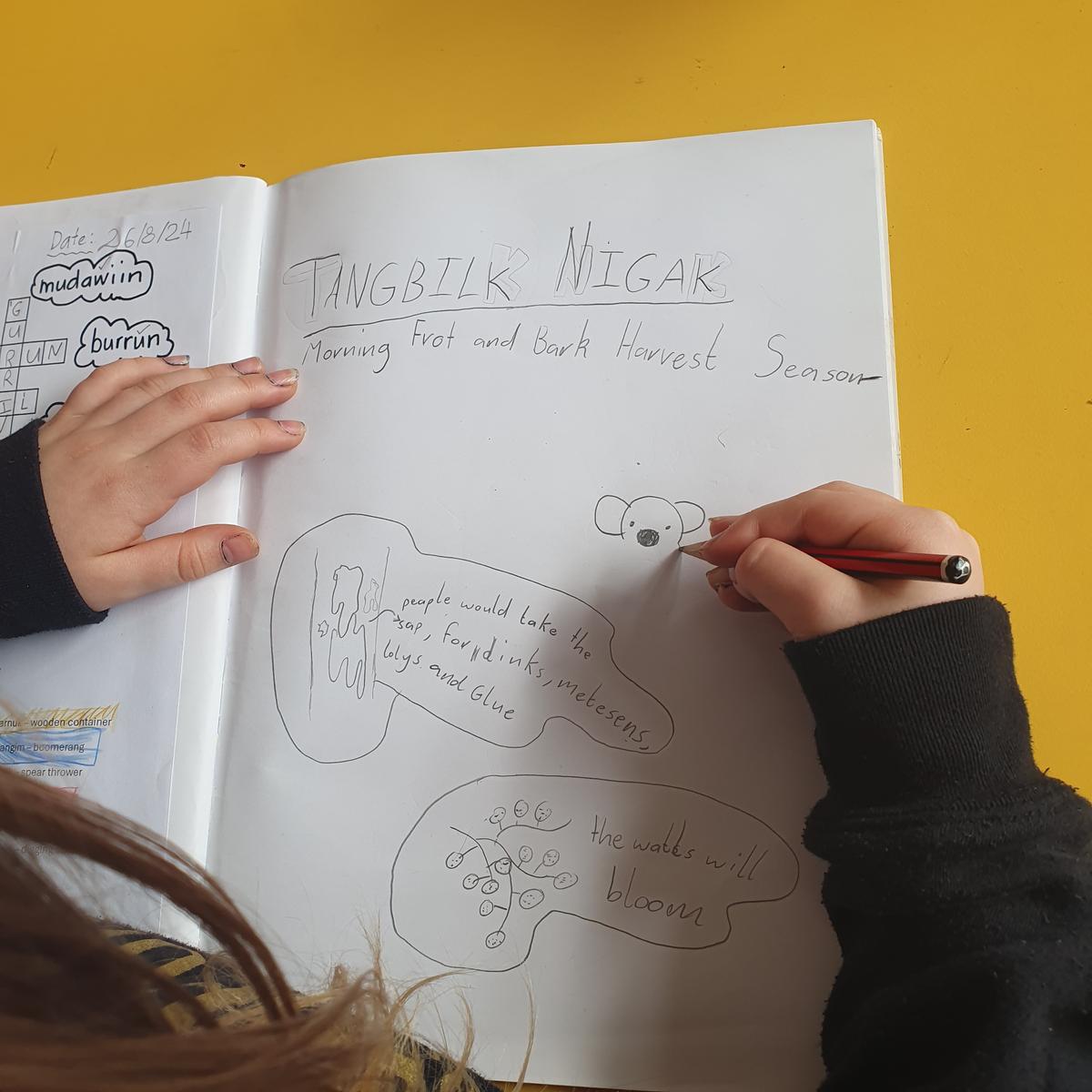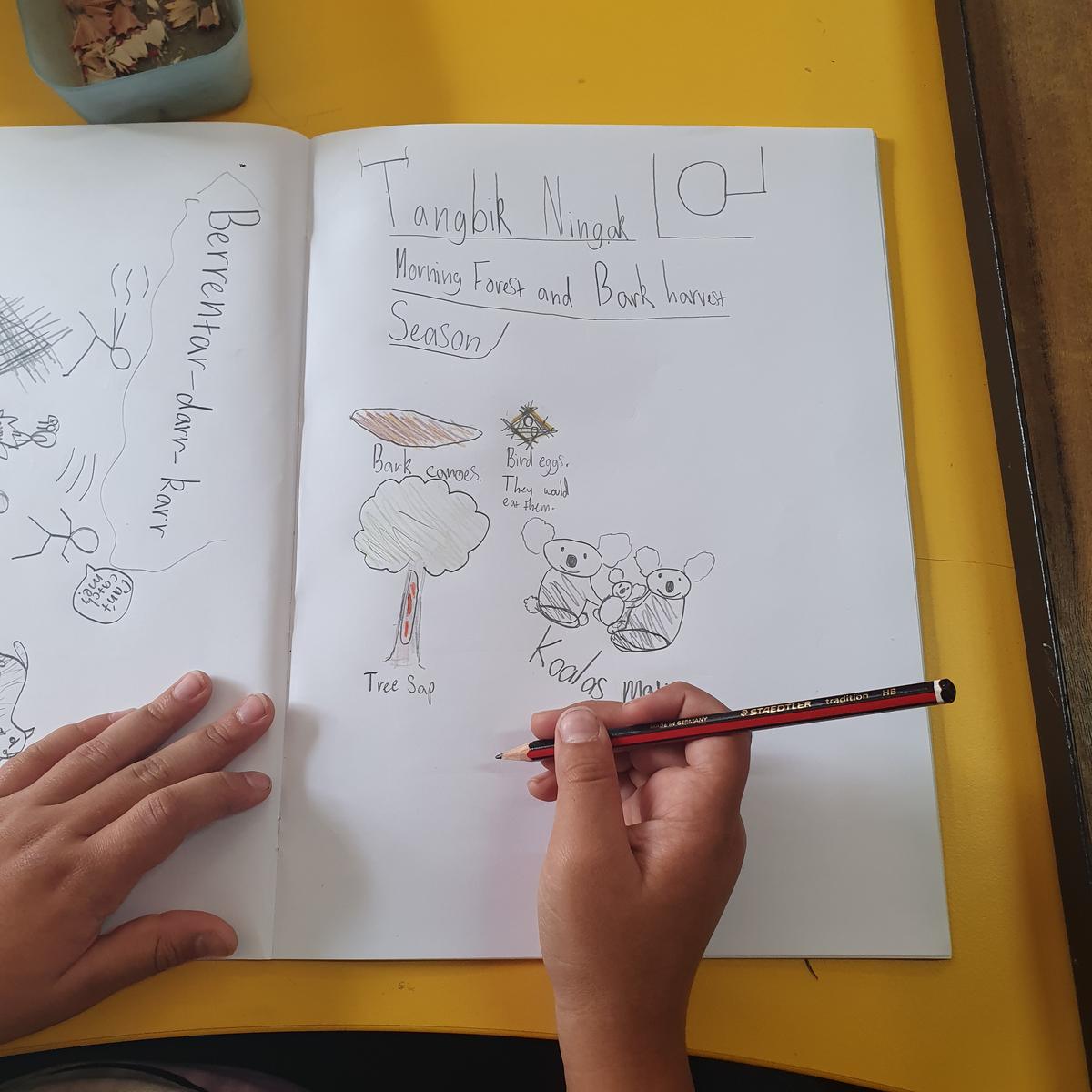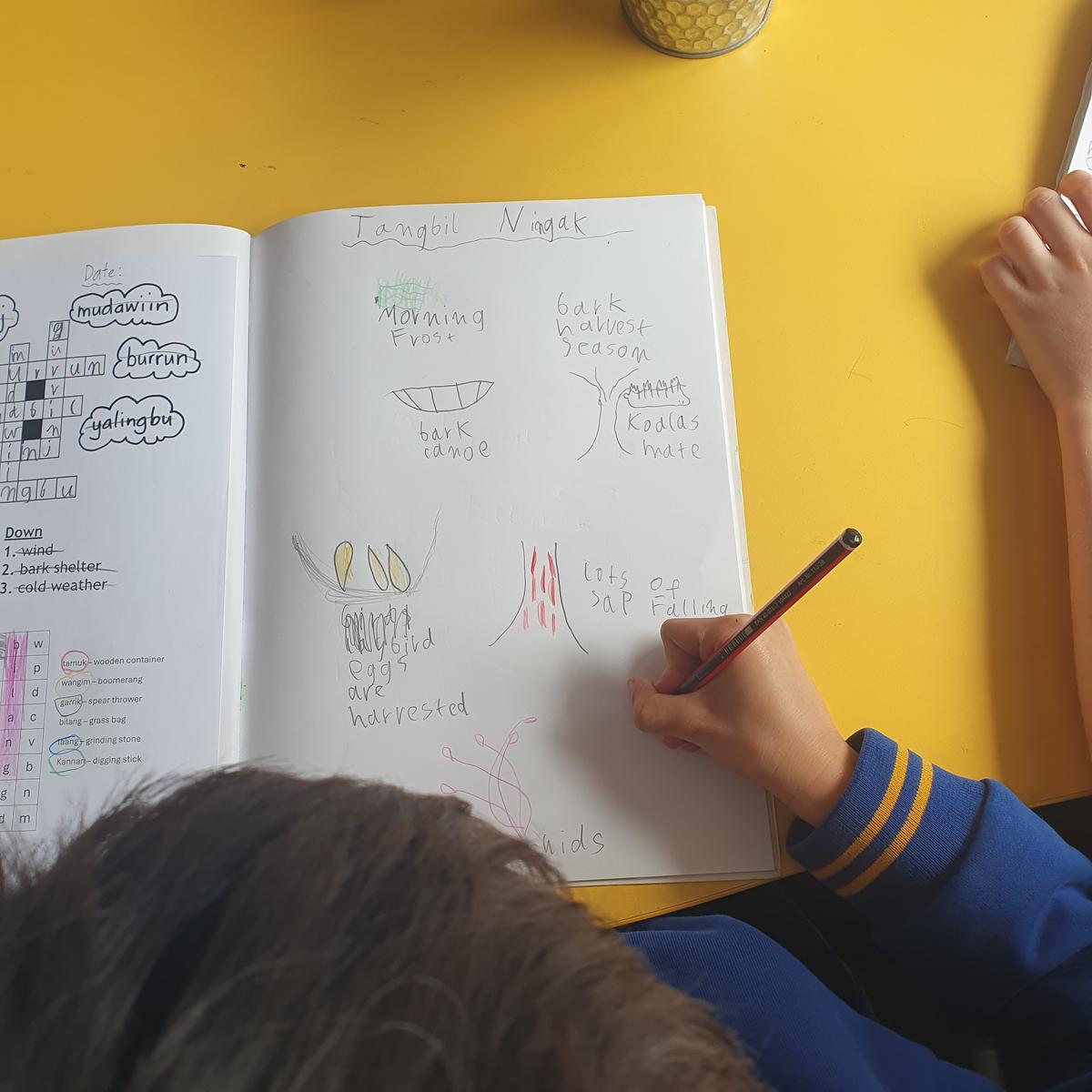Language and Culture
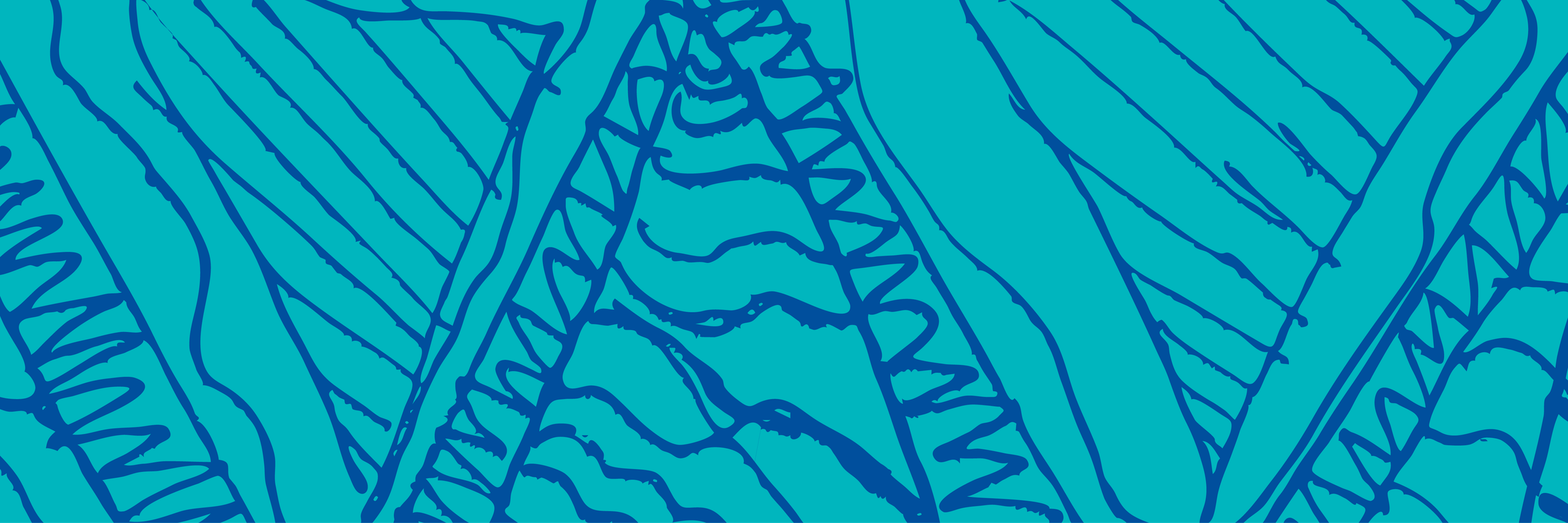
Kii, Deadly TPS community, biladu-njan wat/how are you all? And in the words of my Yawuru language...Ngaji gurrjin/Hello everyone!
We have spent the past two weeks consolidating our learning about the following two Wurundjeri Seasons (as outlined in The Eight Wurundjeri Seasons in Melbourne, Jim Poulter, 2015.)
Berrentak Darr-Karr - Cold West Wind and Artefact-Making Season. This season takes place from about mid-May through to the beginning of August and is marked by the cold west gurrinj/winds blowing throughout this winter period.
Weather conditions:
- Mudawiin/cold weather
- Cooler, rainy days at the start
- Cold, often chilly and wet yalingbu/days and burrun/nights in the middle of the season
- Low temperatures
- Cold, west gurrinj/winds
Wurundjeri seasonal activities:
- Wurundjeri gulinj/people would move to higher ground, away from the Birrarung/Yarra River and low-lying areas, as these would often flood with winter banjmabil/rain. They would build their bark wilams/shelters on higher ground, facing north or northeast, away from the cold winter gurrinj/winds which blow from the south-west.
- Being mudawiin/cold and wet weather, it was not really a good time for travelling and moving around the country. Wurundjeri gulinj would stay put in one place. They would spend much of their time inside their wilams, being warmed by their camp wiinj/fires and their walert/possum skin rugs and cloaks.
- Tools and other equipment were able to be made throughout the year, but because this season was not conducive to much travel, Wurundjeri Woiwurrung people spent much of their time around their wilams, repairing or making new tools and necessary equipment in preparation for the active and bountiful spring period ahead.
- This was also a time that was ideal for engaging the children in close instruction of various tool and equipment making skills.
- During any breaks in the mudwiin/cold weather, traditional games like the football game of mangurt/marngrook, were often played. Although games were played all year round, the colder months made this the best time for playing mangurt, mainly because there were fresh green grassy areas that had been cleared during the earlier burning-off season.
- This was also a time when women’s pregnancies were developing.
Animal life in this season:
- At the start of the season, walert/possums are mating, and marram/kangaroos and wallabies feed on new buath/grass that is growing after the previous burning off season.
- Gawarn/echidnas are breeding and birds are beginning to build their nests.
- Djeri/grubs are drawn from the trees for guwiyap/food.
Plant life in this season:
- Banjmabil/rains encourage grasses and plants to grow after the autumn burning off wiinj/fires.
- Small tuberous plants are growing well after the banjmabil. Many local plant roots and tubers are a good source of guwiyap/food.
- Lots of fungi/mushrooms appear on the ground and the edible ones are harvested and eaten.
- Towards the end of this season, guling/orchids are starting to flower.
- The first flowering of the Muyan/Silver Wattle signals the end of Berrentak Darr Karr and the arrival of Tangbilk Ningak – the morning frost and bark harvest season.
Tangbilk Ningak - Morning Frost and Bark Harvest Season. This period of fairly clear and sunny days but cool, moderate winds that often results in more frequent morning frosts takes place throughout August.
Weather conditions:
- Fairly clear and sunny but still mudawiin/cold weather
- Moderate gurrinj/winds
- More frequent morning dangbelk/frosts
Wurundjeri seasonal activities:
- In this time prior to the October banjmabil/rain and local floods, time was devoted to harvesting bark and making gurrong/canoes, tarnuks/large wooden bowls and buckets and other bark implements.
- New canoes were made every couple of years, whilst tarnuks and other bark implements were required for food gathering in the coming months when bush food would become plentiful.
- Wurundjeri bagurrk/women are nearing the end of their pregnancies.
Plant life during this season:
- The first flow of sap on trees is stimulated by the late winter sunshine in early August and this makes it easy for bark to be harvested.
- Trees have a greater chance of healing before the height of summer. Large sheets of bark were usually removed from the south-east side of the tree, as this offered the best protection from the summer sunshine on the north side and the gurrinj/winds from either the south-west or north-west. Complete removal of bark from a tree was only done when it was intended to kill the tree.
- Guling/Orchids are blooming – orchids were collected, boiled and eaten. The tubers are edible raw or cooked. Some orchid flowers were used for medicinal purposes.
- Silver Wattle, also known as Muyan or Barak’s Wattle, and the Dhagurn/Yellow Box tree are in flower and provide nectar.
Animal life in this season:
- Birds like the finch and the dandan/parrot begin nesting - bird eggs were collected and eaten.
- Ducks were snared in nets and eaten.
- Gurrborra/koalas are mating.
- Murrum/kangaroo joeys begin to emerge from their mother’s pouches.
- Bulenbulen/lyrebirds display the last of their ‘courting’ behaviours.
- Moths and butterflies emerge.
References: The Eight Wurundjeri Seasons in Melbourne, Jim Poulter, 2015. Additional overlapping information about plants and animals during each season has been sourced from: The Eastern Kulin Seasonal Calendar, https://museumsvictoria.com.au/melbournemuseum/resources/forest-secrets/ Seasonal Calendars For The Melbourne Area, Compiled by Dr. Beth Gott of the School of Biological Sciences, Monash University. |
